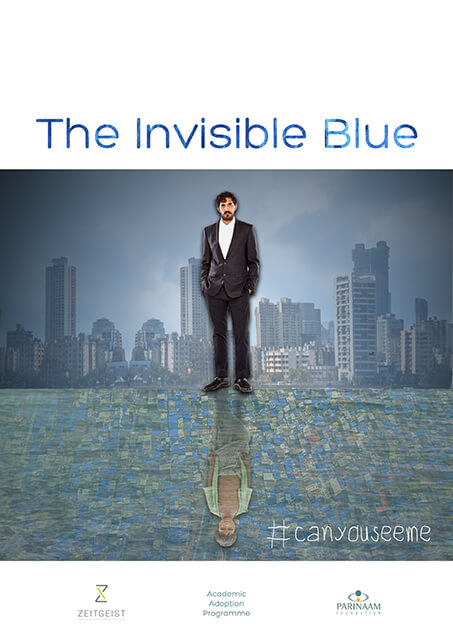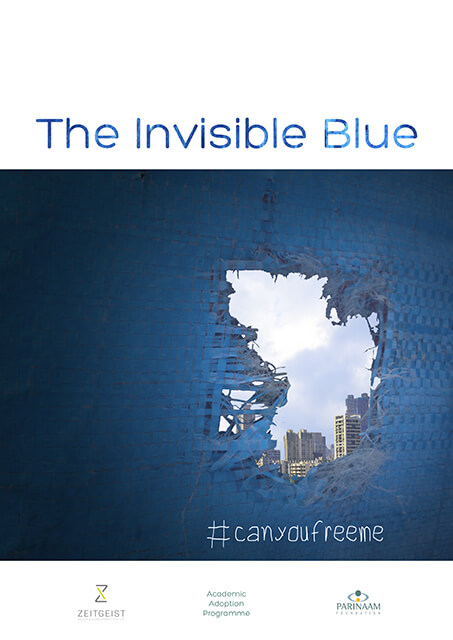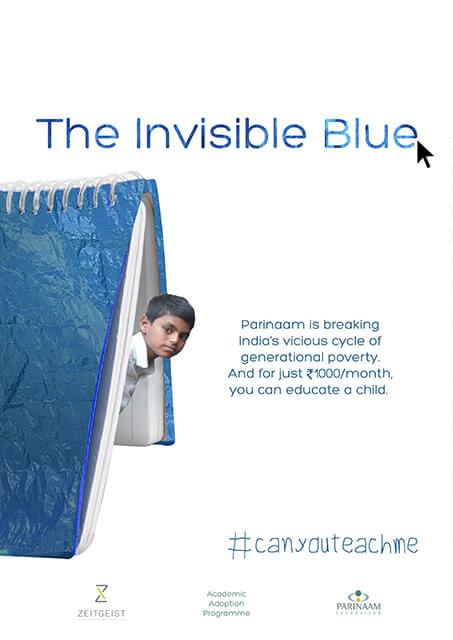Brand Strategy
A few weeks ago, we featured an article that highlighted 3 excellent examples of brands that had been redesigned for enhanced impact.
In the same vein, today we’d like to share a branding project that Zeitgeist recently worked on that is also aimed at enhanced social impact.
As an entry for the How International Design Awards, Zeitgeist extended its work on a brand awareness campaign entitled “The Invisible Blue”, which was developed in collaboration with Parinaam Foundation, a Bangalore based non-profit organisation that cares for “the needs of urban and semi-urban economically underprivileged women.”
One of the programmes that Parinaam runs is the Academic Adoption Programme (AAP), whose aim is to “transform the lives of desperately poor children by providing them access to high quality education in the English medium through academic scholarships.” This is facilitated through sponsorship from patrons, and is the only way, Parinaam believes, the vicious cycle of generational poverty can sustainably be broken.
The Invisible Blue campaign was created to draw focus to the vast segments of our population that go unnoticed and uncared for in our urban context – the bulk of them live in slums and shanty towns, most recognisable by the extensive use of blue tarpaulin, a makeshift protection against the vagaries of nature.
For the HOW competition, which was framed around the idea that “Design speaks to each of us in a universal language. No matter your native tongue, excellence in design can intrigue, inspire and stir one’s emotion”, Zeitgeist designed 3 posters, each anchoring down to a separate hashtag developed as evocative and progressive calls to action. The target audience for this particular campaign was working professionals.
1. #canyouseeme

This hashtag and poster were developed to create awareness.
It features a white-collar professional, against the backdrop of corporate India, juxtaposed with an inverted, muted reflection of an underprivileged young boy against the backdrop of a slum.
The Premise:
How often do professionals, sitting in their high rise offices notice or think about those that were not as fortunate as themselves to receive a good education? What would the less fortunate achieve, were they given an opportunity? In many of our urban cities, such offices exist in proximity to such slums, but the question is – #canyouseeme
2. #canyoufreeme

This hashtag and poster were developed to elicit empathy.
It attempts to take the viewpoint of an underprivileged, uneducated child, looking out from inside his home – a shabby blue tent, onto urban, corporate India.
The Premise:
Does education not free us all in a way, by opening up new opportunities and new possibilities? Underprivileged children do not get these same opportunities and are thus denied the possibility of freeing themselves from the vicious cycle of generational poverty. By asking the question #canyoufreeme, it suggests that the viewer has the ability and the power to do something about the gross inequality a helpless child has been unwittingly and unfairly subjected to.
3. #canyouteachme

This hashtag and poster were developed to prompt action.
It features a curious young boy peeping out of a notebook, that could so easily be his blue tarpaulin tent – the choice is really up to the viewer.
The Premise:
Often people don’t realise that they can do something about a prevailing social problem. The question #canyouteachme nudges the viewer towards the realisation that he/she actually can do something about this particular social problem, via the initiative provided by Parinaam, and most importantly, at a cost that would not make much of a difference to the lifestyle of the majority of corporate India.
The campaign creates bridges of awareness, compassion and purpose between privileged India and urban underprivileged Indian children – the future of our country, who deserve an equal chance at education, empowerment and a better India.
